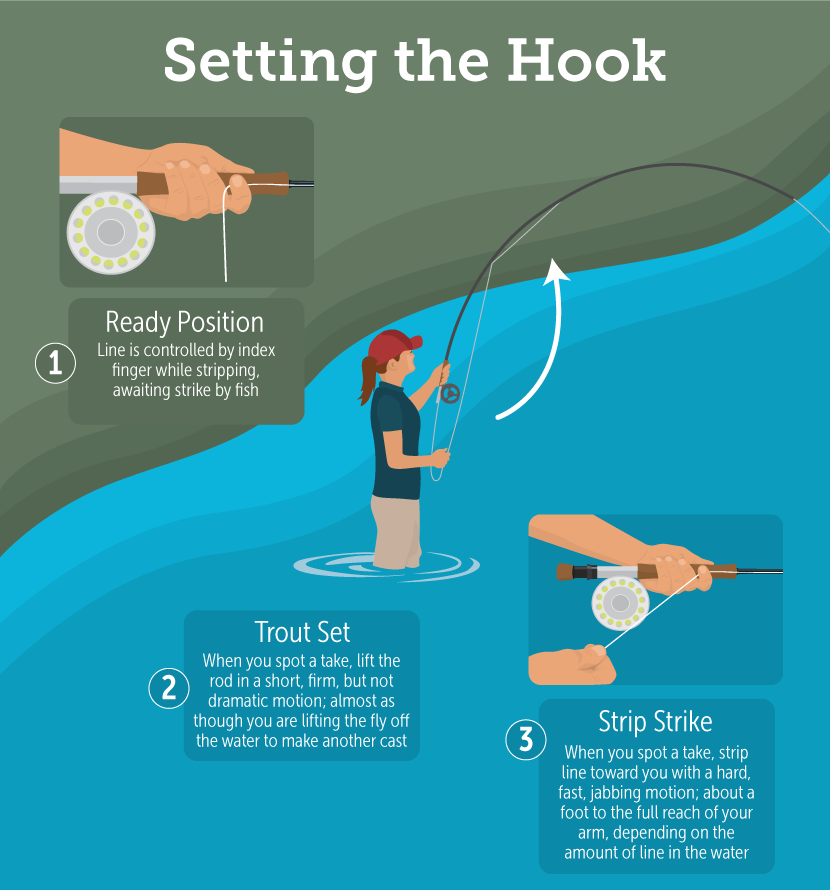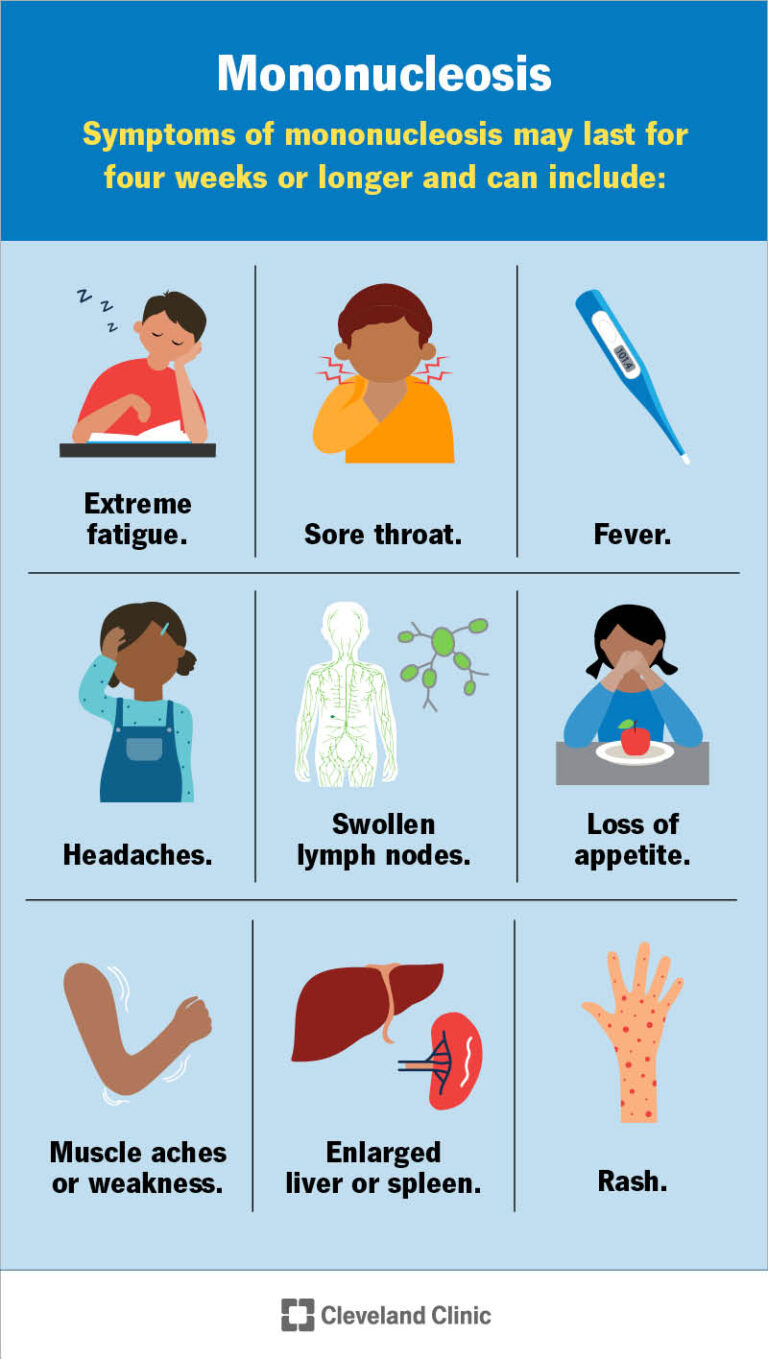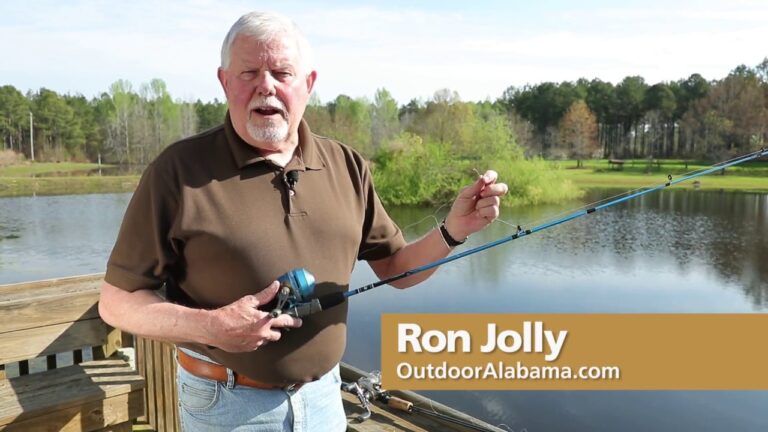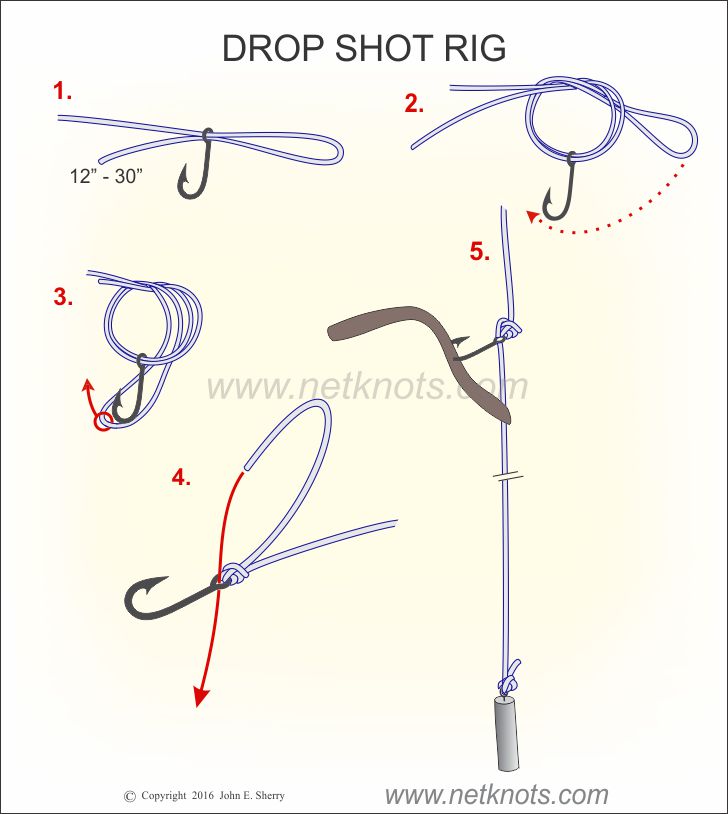How to Set a Hook Fishing

To set a hook while fishing, give a firm, quick tug on the line once you feel a fish bite. Ensure the hook is sharp before casting your line.
Setting a hook correctly is a crucial skill for any angler wanting to increase their catch rate. Feeling the nibble and timing your response just right can mean the difference between a successful catch and a missed opportunity. Anglers must stay alert and be ready to act, keeping a tight line to sense the slightest touch.
Swift, decisive action secures the hook in the fish’s mouth, preventing its escape. Whether you’re a beginner or a seasoned fisherman, mastering the hook set is an essential step towards a rewarding fishing experience. This technique, when practiced and executed with precision, enhances your fishing efficiency and makes your time on the water more productive.
The Art Of Setting A Hook
Timing is critical for successfully setting a hook in fishing. Move too fast or too slow, and the fish might slip away or not get properly hooked. It’s essential to watch the line and feel the rod for the tell-tale signs of a bite.
| Type of Hook Set | Description |
|---|---|
| Sharp Snap | Use this for quick bites. Snap the rod up swiftly. |
| Long Sweep | This method suits heavy fishing gear. Sweep the rod in a long arc. |
| Soft Lift | With delicate baits, lift the rod gently to set the hook. |
Fish will give different signals. Some will nibble and others will strike hard. Know your fish’s habits and choose the right hook set for it. Remember, practice makes perfect. Keep trying and learn from each attempt. Your skills will improve over time.
Essential Gear For Effective Hook Setting
Choosing the right rod is vital for successful hook setting. A firm yet flexible rod ensures better control. Prefer rods with high sensitivity to feel slight nibbles. Opt for a medium-heavy rod for versatility.
While looking for the perfect fishing line, two main types stand out. Braided lines offer strength and minimal stretch, leading to quick hook sets. Monofilament lines are affordable with good stretch, allowing for a gentler set. Remember, line visibility can scare fish. Therefore, translucent lines might improve your catch rate in clear waters.
Mastering The Technique
To set a hook effectively, knowing how fishes think and move is key. Anglers should be familiar with the targeted fish species and their habits. Recognizing the subtle nibbles from false alarms leads to successful catches. Patience is essential in fishing; hasty actions can scare the fish away.
Mastering wrist action is crucial. A swift yet smooth upward wrist flick secures the hook in the fish’s mouth. It’s not about force, but about the right timing and motion. Practice this technique repeatedly to ensure quick and firm hook sets during actual fishing trips.

Credit: www.wikihow.com
Common Mistakes To Avoid
Anglers often find themselves setting the hook too early or too late. This timing is crucial. To ensure a successful catch, it’s important to wait for the fish to fully bite the bait. Premature action can lead to the fish escaping with the bait.
Applying the right amount of force is also key. Too much force can result in breaking the line or harming the fish, while too little may not set the hook firmly enough. Every species of fish may require a different technique. Adjust your approach according to the type and size of the fish.
Advanced Tips For Experienced Anglers
Setting a hook in fast-moving waters demands keen reflexes and precise timing. Anglers must anticipate the fish’s bite and react instantaneously. Lighter gear can help detect nibbles faster. Short, sharp tugs work best to secure the hook. Ensure that your line is always taut to feel the slightest pull.
Observe the water’s flow and adjust your technique accordingly. Fish usually face upstream, so cast your line slightly ahead of the target to compensate for the drift. Match the lure’s speed with the current for a more natural presentation. By mastering these skills, catch rates increase, even in challenging conditions.

Credit: m.youtube.com

Credit: www.fix.com
Frequently Asked Questions Of How To Set A Hook Fishing
How Do You Set A Hook Properly?
To set a hook properly, swiftly jerk the rod upward when you feel a fish bite. Maintain a firm grip, keep the line tight, and ensure the hook’s angle aligns with the fish’s mouth for a secure hold.
What Is The Best Way To Put A Hook On A Fishing Line?
Select the appropriate hook size for your bait. Thread the line through the hook’s eyelet. Tie a secure knot, like the improved clinch knot, leaving a small tail. Trim excess line after the knot. Reel in slightly to tighten.
Do You Have To Set The Hook When Fishing?
Yes, setting the hook is essential in fishing to ensure the fish gets securely caught on the line after biting the bait.
How Do You Set Up A Hook And Weight For Fishing?
To set up a hook and weight for fishing, thread your line through the weight, tie on the hook, adjust weight for depth, and bait the hook. Make sure knots are secure for best results.
Conclusion
Mastering the art of setting a hook is essential for any fishing enthusiast. By practicing the techniques discussed, you’ll enhance your catch rate significantly. Remember, timing and precision are key. So, gear up, stay patient, and get ready for that satisfying tug on your line.
Happy fishing and tight lines!




